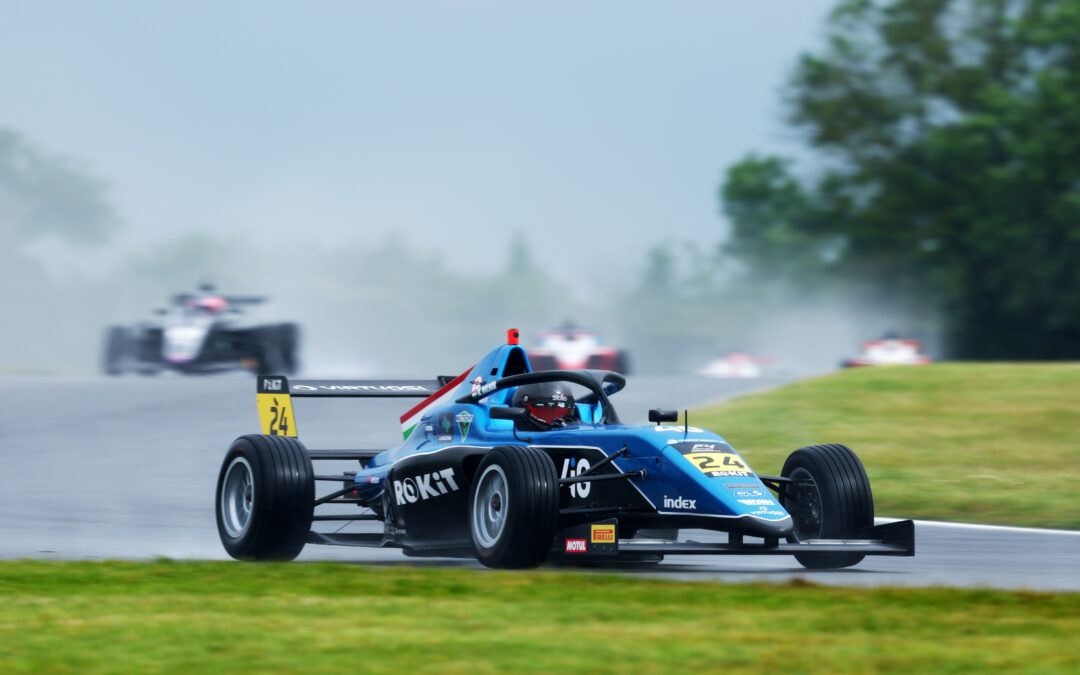The British Formula 4 Championship continues with its fourth race weekend of the year, featuring Molnár Martin, who has stood on the rookies’ podium four times in the previous rounds. The Hungarian driver from Virtuosi Racing faces a significant challenge at the season’s fastest venue at Thruxton.
The British Formula 4 Championship resumes with what should be the fastest most exciting races of the year at Thruxton, located 30 miles from Southampton, Hampshire. Like many race tracks in England, the 2.356 miles long Thruxton Circuit originated from a World War II airfield, which played a significant role in the D-Day, as planes carrying British and American paratroopers also took off from here.
After the war, motorcycle racers first took over the then-abandoned airfield in 1950 followed by cars in 1952. At that time the runways were still part of the layout but by 1968 they were removed and the current track, consisting mostly of fast, sweeping corners was established. In the early days Formula 2 races held here saw competitors like Graham Hill and Jackie Stewart, who together won six Formula 1 World Championships, as well as Jochen Rindt, the only posthumous F1 World Champion. In recent decades many future Formula 1 drivers, as well as Martin’s mentor and MOTAM leader, Kiss Pál Tamás, have experienced what it’s like to race on the UK’s fastest circuit.
“There are only two braking zones on the entire track, while we speed through extremely fast corners without braking. Some corners are more challenging, but apart from two, we go full throttle throughout. Slipstream is crucial, promising exciting, overtaking-filled races. Defending will be harder than attacking because the track includes a very long straight. Depending on the wind direction, we not only achieve the highest average speeds but also the highest top speed of the season here; during last week’s test, we reached 240 km/h,” described Martin the track that tests drivers’ courage.
“The two braking zones are both very difficult because you have to brake while turning, making it easy to lock the front tires. The rough asphalt means that a single lock-up can have the same effect as 5-6 lock-ups on other tracks. We need to be careful because tires can wear out quickly, making tire management crucial,” emphasized the Virtuosi driver.
“The rough asphalt also can be advantageous in that a little rain doesn’t make it immediately slippery, but the quality isn’t the same everywhere. Due to multiple resurfacing and patching, some corners have a mix of new and old asphalt. In the rain, the new asphalt is much more slippery, so you must be very careful, or it’s easy to lose the car at high speeds.”
Although the military airfield was closed in 1946, and initially the runways were used by cars and motorcycles, it is now in use again, adding another unique aspect to races at Thruxton.
“Besides being the fastest track on this year’s calendar, it’s special because there’s an active airport in the middle. While driving, we don’t focus on this, but when you’re at the right place at the right time, you notice planes taking off or landing just above or in front of you,” reported Martin about his test experiences.
The driver of the Hungarian Motorsport Academy, operated by HUMDA Hungarian Mobility Development Agency Zrt., part of the Széchenyi University Group, finished on the rookies’ podium four times in the first three rounds, and aims to do the same at Thruxton, while also striving to score points and achieve a high overall position.
The schedule for the 4th round is as follows (times are in local time, which is GMT+1):
Friday
10.40 – 11.30: Free practice 1
14.20 – 15.10: Free practice 2
Saturday
11.05 – 11.25: Qualifying
16.30 – 16.50: Race 1
Sunday
13.00 – 13.20: Race 2
16.30 – 16.50: Race 3

